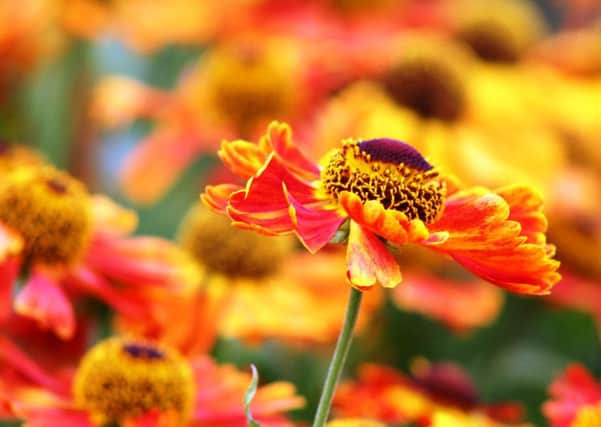Gardening: Perennially grateful


Here’s a game of family favourites – not music, but plants. And, in particular, those perennials that bring colour and form into the lives of many gardeners who work hard for just a few months of reward.
My own favourite herbaceous perennial is not one that can be ignored easily – for a blazing vibrancy you’ll never forget, it has to be heleniums, which right now are blooming in profusion. They began flowering in June but with the right conditions, they’ll still be putting on an unforgettable show several weeks later.
Advertisement
Hide AdAdvertisement
Hide AdA few years ago, heleniums had fallen off the radar, but now, thankfully, they have become an integral part of many a late-summer border.
And it’s not just gardeners who love them; bees adore them, using the flowers’ domed centres as landing pads from which to scour for nectar.
And alongside the orange, there’s another favourite – the pink/red flowers of Echinacea, another, slightly shorter perennial tailor-made for a blooming border.
And next to them, what about rudbeckia to provide yellow and orange flowers on tall – or short – stems? “Goldsturm” is the most popular choice for back-of-the-border stems 60cm tall, while dwarf black-eyed Susan “Toto” is better for the fronts of borders.
Advertisement
Hide AdAdvertisement
Hide AdThen there’s tickseed (coreopsis) to provide more vivid yellow bloom, and Stemmacantha centaureoides, a stunning silver-foliage and purple thistle that lights up in June and goes one better in July.
More hot perennials include the likes of asters, particularly those that produce lovely lavender daisy flowers from July until October. Once upon a time they were prone to mildew, but many of today’s modern varieties are unaffected.
And last but not least, lobelia, in particular the variety “Tania” – a late-summer sensation, a mix of purple and crimson and ideal for the middle of any herbaceous border.
To make sure all the family’s favourites thrive and multiply in their allotted spaces, give them the things they like – a sunny site, plenty of goodness in the ground (incorporate well-rotted manure, old compost etc to bulk up the soil and help it retain moisture without becoming water-logged) and as much water as they need throughout the growing season.
Get it right and you’ll have many months to sit back and reap the rewards.